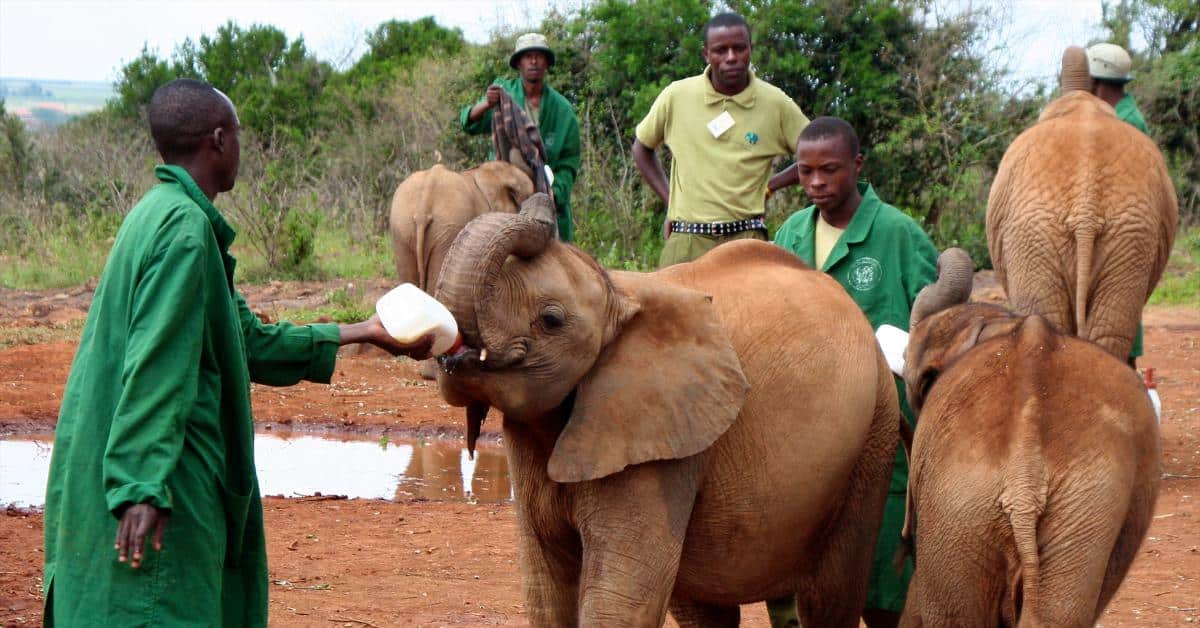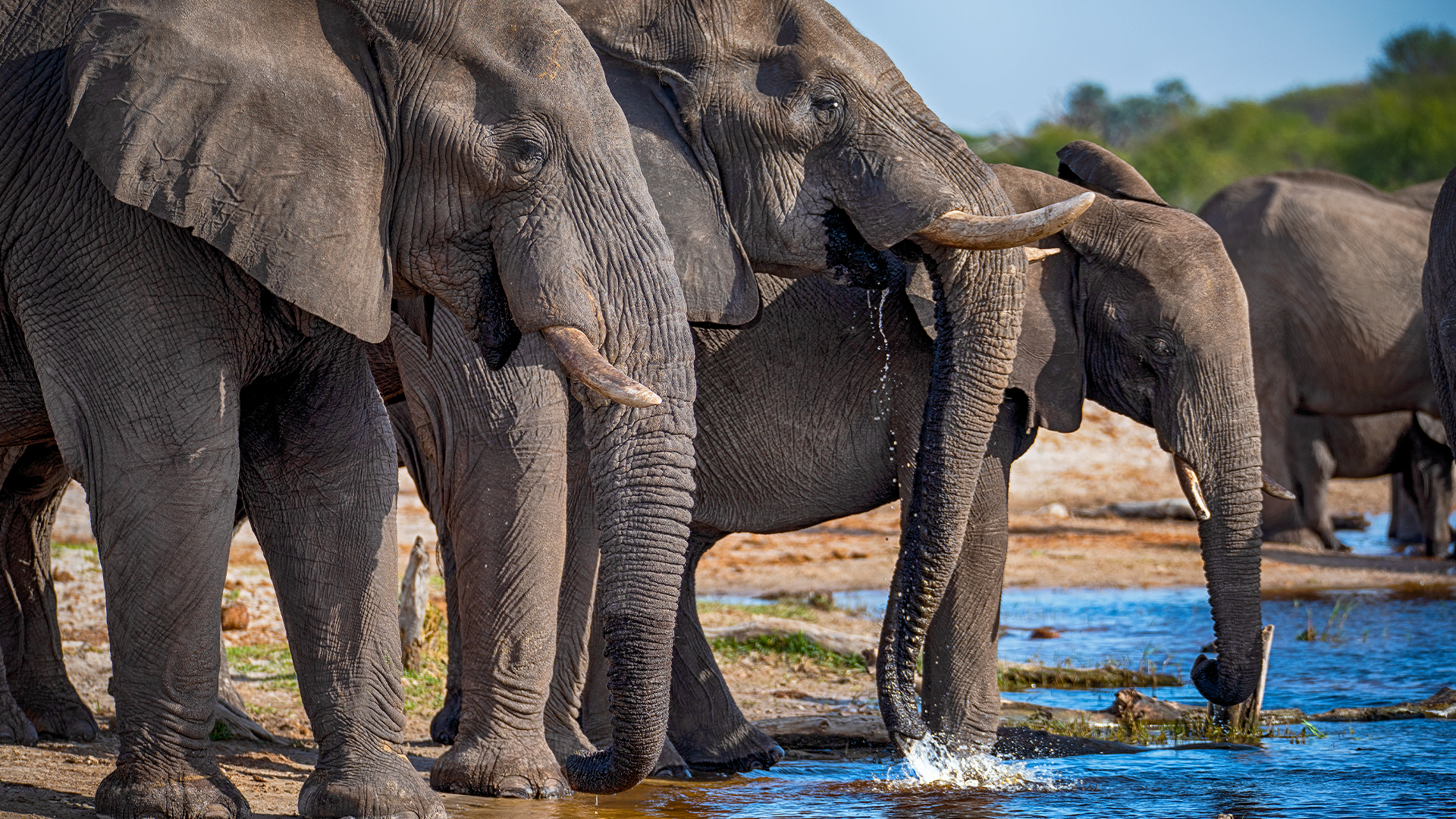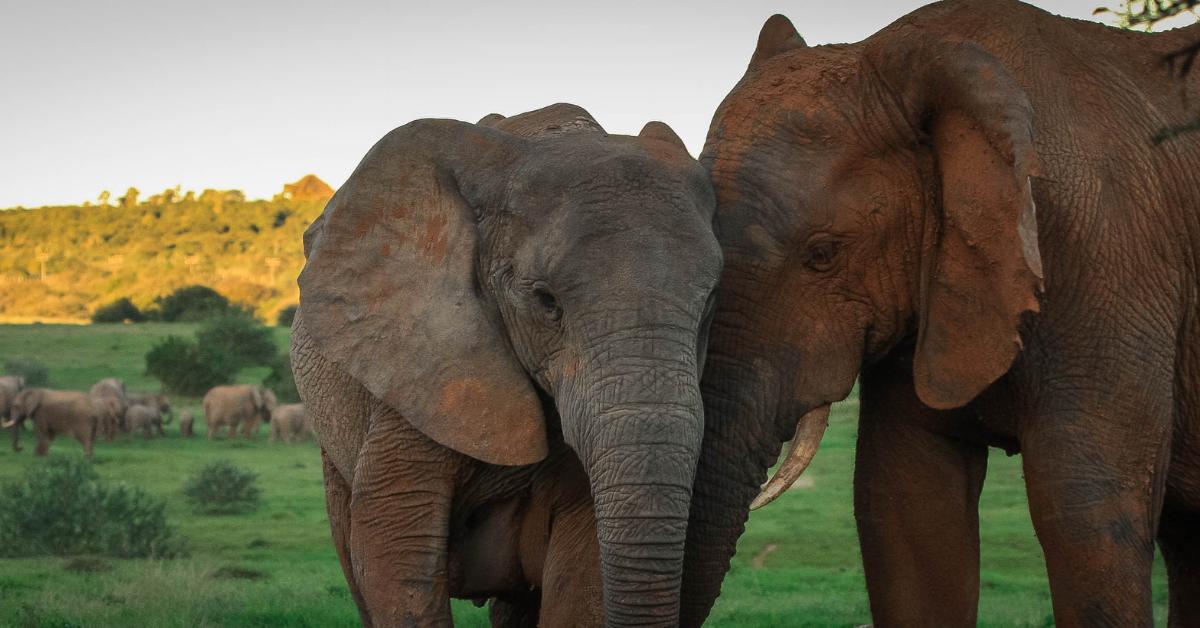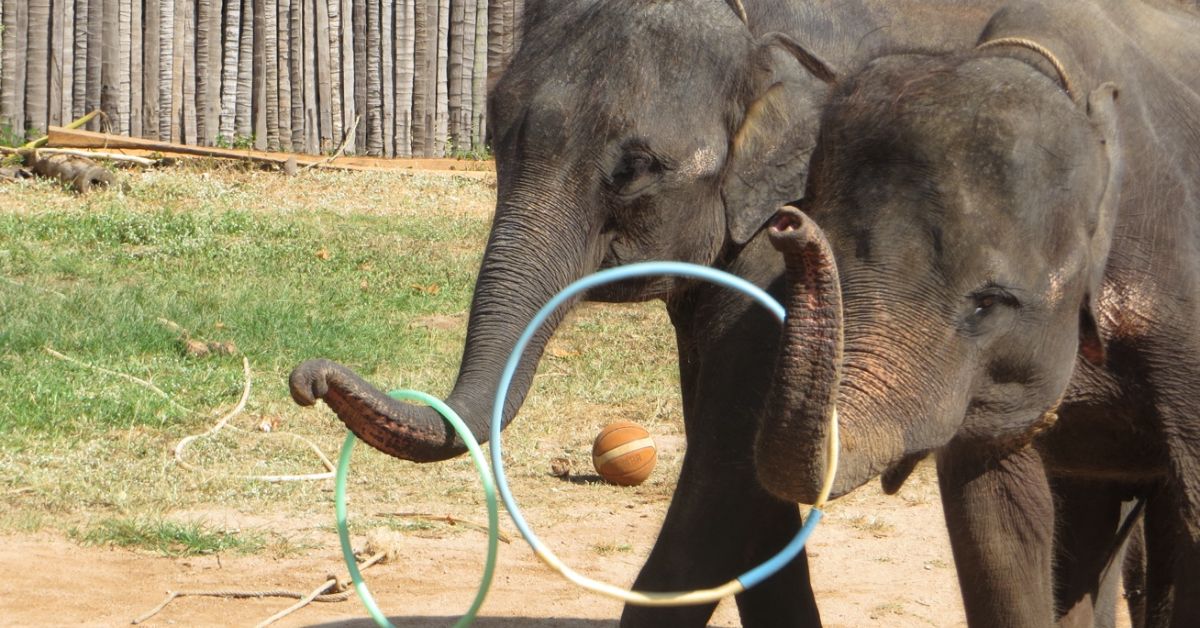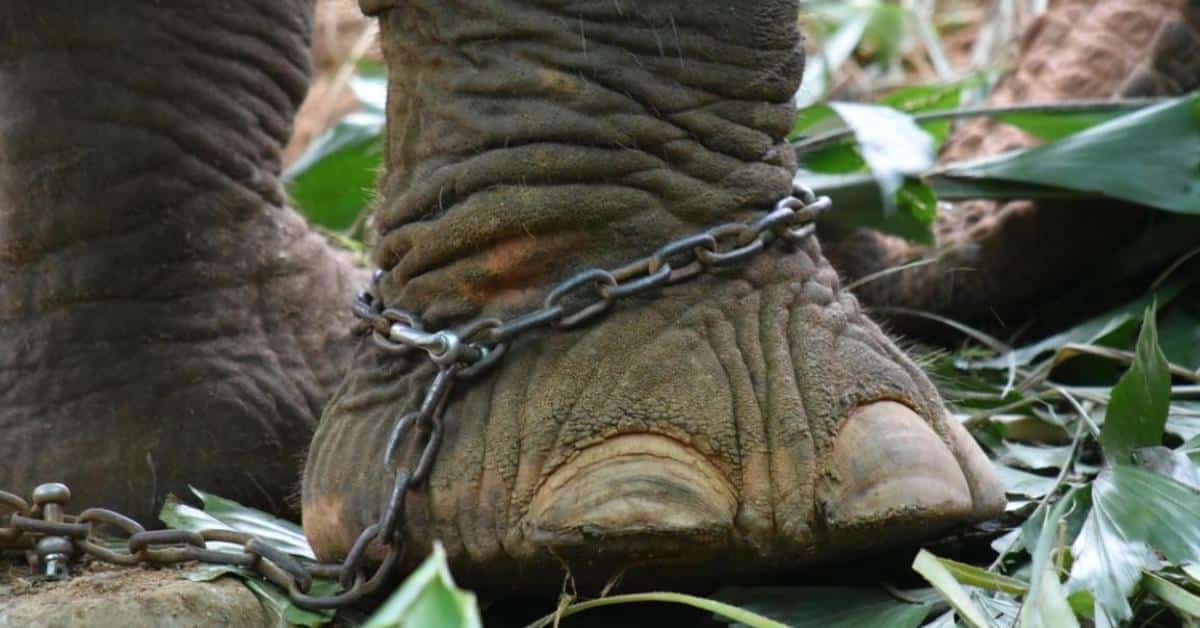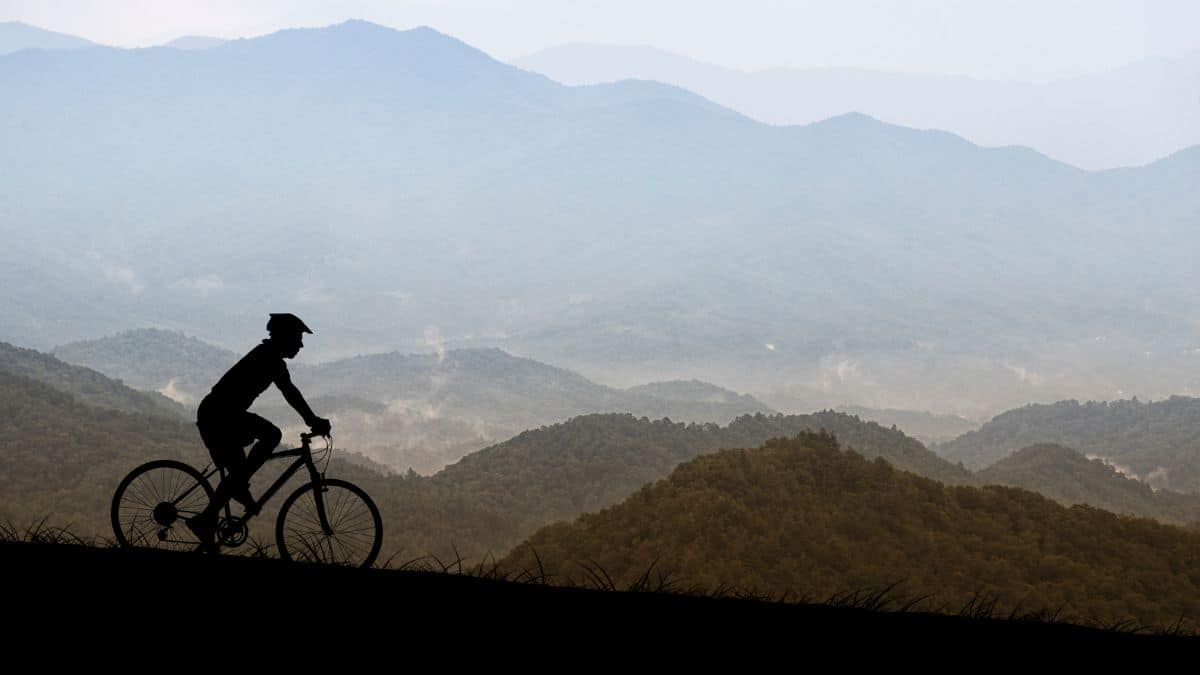Introduction
Just like humans, elephants have basic needs – space to roam, food to eat, and water to drink. However, the increasing overlap between human and elephant habitats across Asia and Africa has led to a troubling trend: human-elephant conflict.


This conflict poses severe challenges for both humans and elephants, jeopardizing lives, disrupting local communities, and impacting the delicate balance of ecosystems. But fear not, because all around the world, folks are rolling up their sleeves (and trunks) to tackle this significant issue.
Here at Easy Travel, we have a soft spot for all creatures, great and small. So today, we’re exploring a handful of the many projects that aim to bring harmony to elephants and human neighbors alike
How do you stop a crop-raiding elephant?
When deterring elephants from raiding crops, communities must find innovative solutions to protect elephants and their livelihood while ensuring the safety of both parties. From chili-infused barriers that deter wild elephants with their spicy scents to beehive fences that use the natural aversion elephants have to bees, various methods have been developed to deter crop-raiding elephants without harming them.
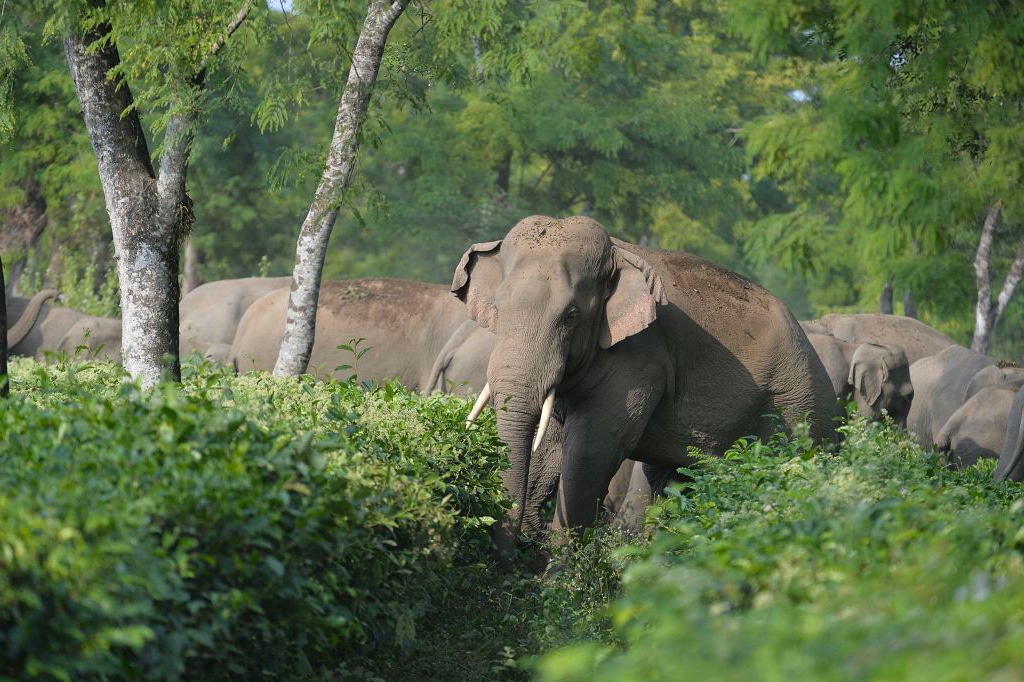

When an elephant bites the dust, it’s not just a simple bump in the road. Due to their slow reproduction rates, every elephant loss hits hard, especially when mama elephants leave their babies behind to fend for themselves. Join Easy Travel and me as we explore how these projects create harmony and coexistence between humans and elephants.
Every great deed begins at home. Let’s start by exploring the remarkable projects situated in our lovely country of Tanzania:
Tanzania’s Initiatives to Address Human-Elephant Conflict
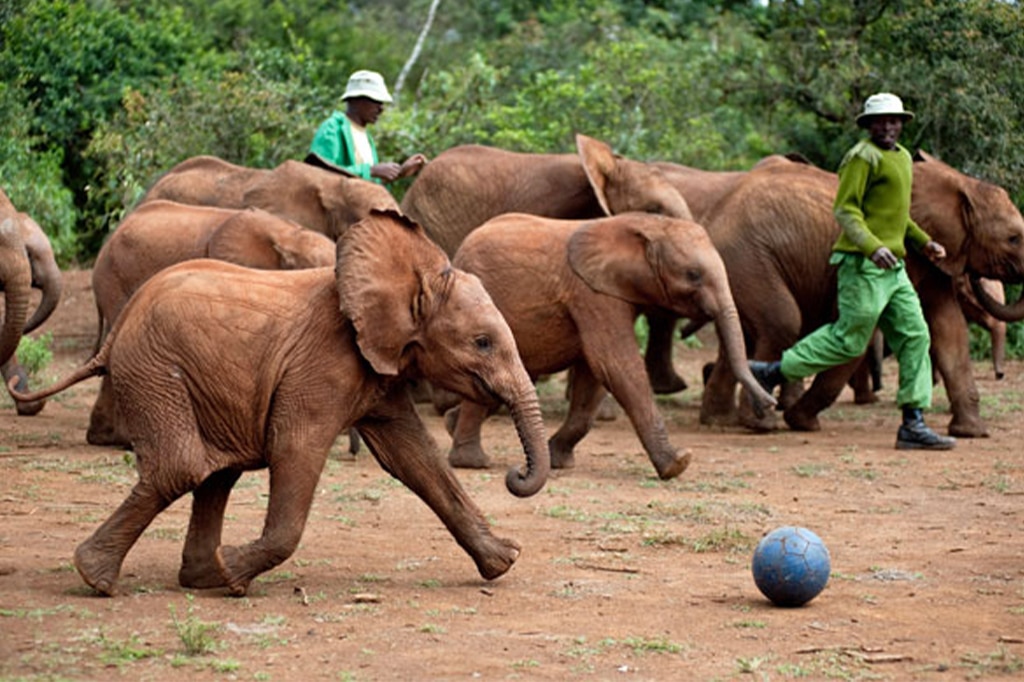

1. Tarangire Elephant Project
Focused on the renowned “Elephants Playground” in the Tarangire National Park ecosystem, the Tarangire Elephant project began studying the African elephant population in 1993, making it the second-longest elephant study in Africa! This project engages local communities in habitat conservation and sustainable livelihoods.
Following an agreement between tour operators and village leaders, two villages have agreed to enact Conservation Easements on their land. These easements prioritize using the surrounding land for livestock and wildlife, prohibiting all agriculture and permanent settlement in that designated area.
The project has implemented improved agricultural practices and successfully improved farmers’ livelihoods, incorporating strategies for crop protection while promoting biodiversity conservation. In turn, the villages receive annual compensation from the tour operators.
So far, over 300,000 acres of land have been set aside for exclusive pastoral use through this initiative, reducing human-elephant conflict.
See The Tarangire Elephant Project
2. Ruaha-Katavi Elephant Project
Operating within the expansive Ruaha–Katavi landscape, this project is dedicated to enhancing the understanding of wild elephant behaviour and deploying early warning systems to mitigate HUMAN elephant conflict within the surrounding national park boundaries.
Aviation support is pivotal in the project’s endeavours by providing crucial baseline estimates and aerial surveillance to monitor elephant movements and detect potential conflict hotspots. Maintaining the wildlife population in the region is essential for ecological balance and conservation efforts.
They are collaborating closely with local communities, district authorities, and national government bodies to enhance the management of two vital wildlife corridors linking the east and west of the Ruaha-Katavi landscape.
Tanzania’s forward-thinking community forest management legislation is the backbone of the approach, prioritizing local communities as both managers and beneficiaries. This strategy is crucial considering that much of the landscape is already designated as protected land, with limited support for further political initiatives.
See The Ruaha-Katavi Elephant Project
3. Selous Elephant Conservation Program
Coexistence between humans and elephants presents a significant challenge in Tanzania, where African elephants are both a conservation priority and a source of conflict with local communities. The Human-Elephant Coexistence team addresses this challenge by enhancing the capacity for peaceful coexistence in various ways.
They work with farmers to form cooperatives and implement crop damage reduction projects, including innovative beehive fence projects. This bee project aims to reduce human-elephant conflict by using the bee’s buzzing sound and stings as a natural deterrent. Additionally, they trial farm-based crop protection techniques and support livelihood diversification through access to loans to address issues like elephant crop raiding.
Education and events to raise awareness are conducted to promote understanding of elephant behavior and provide guidance on staying safe around them. Collaborating with Village Governments, the team aims to establish Land Use Plans that foster human-elephant coexistence while supporting the creation of corridors to facilitate safe elephant movement.
Through these efforts, they strive to mitigate the negative impacts of human-elephant interactions and promote harmonious coexistence for both species, especially for farming communities situated around conservation areas.
See The Selous Elephant Conservation Program
Let’s expand our view beyond Tanzania and explore some incredible global projects working to address the conflict between humans and elephants:
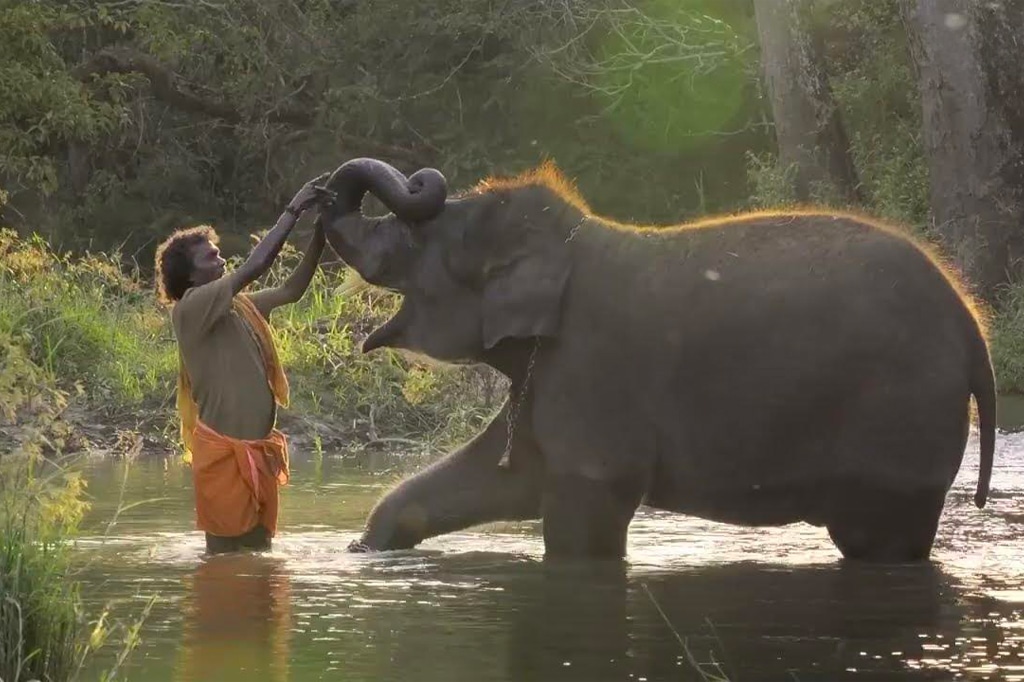
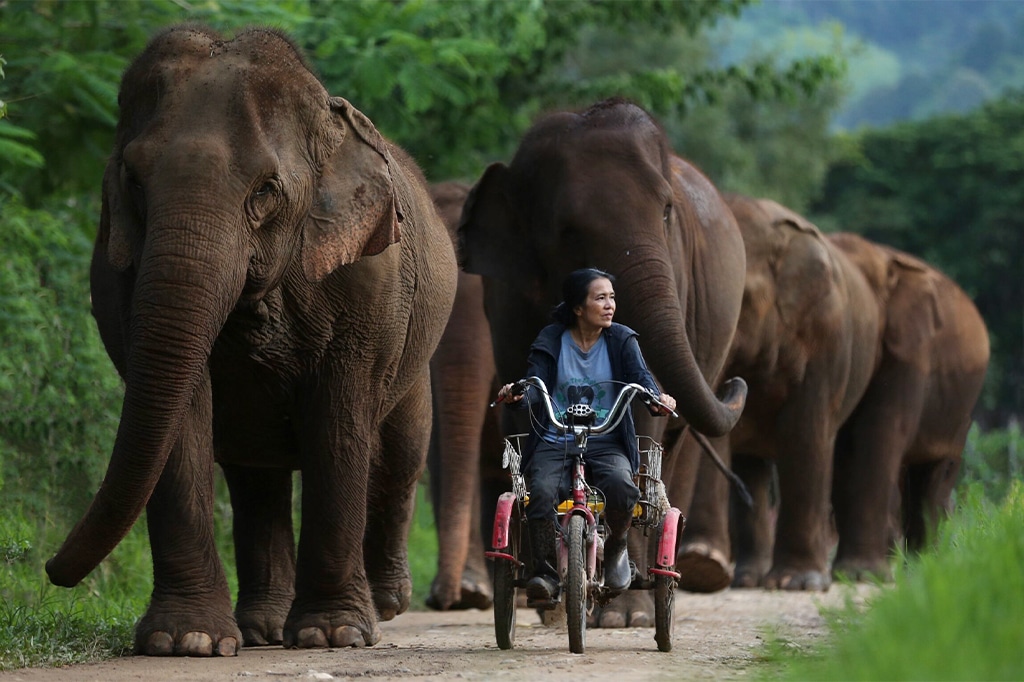
1. The Elephant Family in India
The Elephant Family is on a mission to ensure a brighter future for Asian elephants in India. Through various conservation efforts, they’re protecting elephant habitats and fostering harmony between humans and wild elephants. By teaming up with conservationists, forest officials, and local governments, they’re expanding protected areas and enhancing living conditions for all species beyond these boundaries.
In Myanmar, initiatives were built upon previous regional successes from 2017 to 2020. Through school programs and community outreach, locals were equipped with the knowledge to peacefully coexist with wild elephants.
The initiatives included implementing seasonal electric fencing to deter crop raids without permanently obstructing elephant movements in their customary feeding areas and corridors. Biodiversity education programmes play a crucial role in these efforts by educating farming communities on sustainable practices that protect their crops while promoting conservation.
But their impact doesn’t stop there. Their projects are making a positive difference on multiple fronts by creating job opportunities for rural communities, enhancing carbon absorption, and curbing air pollution across South Asia. This holistic approach benefits wildlife and people, ensuring a sustainable future for future generations.
2. The EcoExist Project in Namibia
Founded in 2013 by a multi-disciplinary team, the EcoExist Project addresses human-elephant conflict in Namibia through innovative techniques such as early warning systems and beehive fences. By working closely with local communities, the project aims to reduce crop-raiding incidents and support elephant conservation of their habitats.
This initiative is simultaneously supporting elephant conservation efforts alongside local agricultural practices. Through their ongoing research, they gather social, biological, and ecological information about people and African elephants in the region to gain a big-picture understanding of the competition and foster opportunities for zoning land and reducing conflicts.
All activities are closely monitored, which helps them better understand the challenges faced and provides vital evidence to guide their interventions and shape policies. By learning from past experiences, they can better adjust their approaches to improve the working experience for their partners and others working in the field.
3. The Sri Lanka Wildlife Conservation Society (SLWCS)
The SLWCS is a nongovernmental organization focusing on reducing human-elephant conflict in Sri Lanka through community-based conservation and education programs. By engaging with local communities and implementing measures such as elephant-friendly crop cultivation practices, the SLWCS aims to minimize conflicts while conserving Sri Lanka’s unique wildlife.
The project has promoted crop diversity to support farmers in protecting their crops from elephants, improving livelihoods, and enhancing ecological health in the region. Throughout the years, they’ve implemented electric fences around nearby villages, serving a dual purpose of safeguarding residents while granting wild elephants the freedom to roam.
Their dedication to crafting practical solutions not only reduces elephant-human conflicts but also tackles environmental degradation, climate change, and biodiversity loss. By recognizing the interconnectedness of these challenges, they aim to enact comprehensive elephant conservation efforts that yield long-lasting and impactful results.
See the Sri Lanka Wildlife Conservation Society
4. The Odzala Discovery Camps and Elephants Initiative
The Odzala-Kokoua Project is a pivotal conservation initiative aimed at protecting African forest elephants in the Congo Basin. Located in Odzala-Kokoua National Park in the Republic of Congo, this project focuses on anti-poaching efforts, habitat preservation, and monitoring the health of African forest elephant populations.
The project collaborates with the African Elephant Fund and local organizations to mitigate human-elephant conflicts in farming communities near conservation areas in Ghana, employing innovative techniques to protect crops and enhance community awareness of biodiversity conservation.
By using advanced tracking technologies and fostering local community involvement, the project strives to combat illegal wildlife trade and safeguard the delicate rainforest ecosystem crucial for the survival of these endangered elephants. The project also works to mitigate human-wildlife conflicts and supports sustainable practices to ensure long-term conservation success.
See the Odzala-Kokoua National Park (n.d.) Odzala-Kokoua Project
Conclusion
These initiatives underscore the critical role of collaboration between communities, conservation organizations, and governments in effectively mitigating human-elephant conflict. By implementing innovative solutions and promoting coexistence, we can safeguard the survival of humans and elephants in shared landscapes.
Households lose over 65 percent of food crops cultivated annually, particularly maize and cassava, to elephant crop raiding, which drives affected communities to engage in poaching as a means of coping with the financial losses. Ready to witness the magic yourself? Join Easy Travel on an adventure-packed journey to Tanzania!
Dive into the heart of elephant conservation projects, mingle with local communities, and embark on thrilling wildlife safaris—all while making unforgettable memories and contributing to protecting our majestic wildlife friends.
Frequently Asked Questions (FAQs)
1. What is human-elephant conflict and why is it a problem?
Human-elephant conflict occurs when elephants and humans come into close contact, often leading to negative interactions. This conflict typically arises when elephants damage crops, property, or even cause injuries or fatalities, leading to retaliatory actions by affected communities.
The problem is exacerbated by the growing human population and expansion of agricultural land into elephant habitats, which reduces the space available for elephants to roam. This conflict not only threatens the survival of elephant populations but also impacts the livelihoods and safety of local communities, creating a pressing need for effective mitigation strategies.
2. How do conservation projects help mitigate human-elephant conflict?
Conservation projects aimed at reducing human-elephant conflict implement a variety of strategies to minimize negative interactions between elephants and people. These include creating physical barriers, such as beehive fences or electric fences, to protect crops and property from elephant raids.
Other initiatives focus on educating communities about elephant behavior and safe practices, as well as developing early warning systems to alert communities of nearby elephants. Additionally, conservation projects often work to secure and maintain wildlife corridors that allow elephants to move freely without encroaching on human settlements, thereby reducing the likelihood of conflict.
3. What role do local communities play in reducing human-elephant conflict?
Local communities are integral to the success of projects aimed at reducing human-elephant conflict. Many conservation initiatives involve community participation in the planning and implementing conflict mitigation strategies.
This can include training local people to manage beehive fences, participate in wildlife monitoring, or engage in sustainable agricultural practices that minimise the risk of conflict. By involving communities, these projects ensure that the strategies are culturally appropriate and sustainable in the long term.
Moreover, community members often serve as conservation ambassadors, helping raise awareness and promote coexistence with wildlife.
4. What are beehive fences, and how do they help reduce human-elephant conflict?
Beehive fences are a simple yet effective method for reducing human-elephant conflict. Elephants are naturally afraid of bees, as even a single sting inside their trunk can be excruciating. Beehive fences capitalise on this fear by using beehives strung along wires around the perimeter of fields.
When an elephant tries to enter the field, it disturbs the hives, causing the bees to swarm and the elephants to retreat. This method protects crops and provides an additional source of income for farmers through honey production, making it a win-win solution for both conservation and community livelihood.
5. How do early warning systems work in preventing human-elephant conflict?
Early warning systems are designed to alert communities when elephants are approaching, giving people time to take protective measures. These systems can include a network of observers, often community members, who monitor elephant movements and communicate sightings through radio or mobile phone networks.
In more advanced setups, these systems can involve GPS tracking of elephant herds, where collars fitted with GPS devices send real-time location data to a central monitoring station. When elephants approach human settlements, the system alerts local communities, allowing them to secure crops, move livestock, and avoid potentially dangerous encounters.
6. What are wildlife corridors, and why are they essential in reducing human-elephant conflict?
Wildlife corridors are designated areas that connect fragmented habitats, allowing elephants and other wildlife to move between them without coming into contact with human activities. These corridors are crucial for maintaining the ecological balance and ensuring species’ survival by providing access to water, food, and breeding grounds.
By preserving and restoring these corridors, conservation projects help reduce human-elephant conflict by preventing elephants from encroaching on farmlands and settlements. Corridors also support genetic diversity by enabling wildlife movement between different populations, essential for species’ long-term health.
7. How do conservation easements contribute to reducing human-elephant conflict?
Conservation easements are legally binding agreements that restrict land use to protect wildlife habitats while allowing landowners to retain ownership. In human-elephant conflict, conservation easements often involve agreements between local communities, conservation organisations, and government authorities to set aside land for wildlife conservation, preventing agricultural expansion into elephant habitats.
These easements help reduce conflict by preserving critical habitats and elephant migration routes, thereby minimising the chances of encountering humans. Additionally, communities involved in conservation easements may receive compensation or other benefits, making it a mutually beneficial arrangement.
8. How do crop diversification and sustainable agriculture help mitigate human-elephant conflict?
Crop diversification and sustainable agriculture practices are effective strategies for reducing human-elephant conflict. By planting crops that are less attractive to elephants, such as chilli peppers or certain types of legumes, farmers can decrease the likelihood of crop raiding.
Additionally, sustainable practices such as agroforestry, where crops are grown alongside trees, can provide additional barriers that deter elephants while enhancing soil fertility and biodiversity. These practices not only protect crops from elephant damage but also improve the resilience of local agriculture, ensuring food security and sustainable livelihoods for communities living near elephant habitats.
9. How do education and awareness programs help reduce human-elephant conflict?
Education and awareness programs are vital components of efforts to reduce human-elephant conflict. These programs aim to inform communities about elephant behaviour, the importance of elephants to ecosystems, and safe practices for coexisting with them.
By raising awareness, these initiatives help dispel myths and reduce fear, fostering a more tolerant attitude toward elephants. Education programs also provide practical guidance on how to avoid conflict, such as securing food storage areas, using deterrents like beehive fences, and knowing what to do when encountering elephants.
Over time, these programs can lead to a cultural shift prioritising conservation and coexistence.
10. What is the impact of human-elephant conflict on elephant populations?
Human-elephant conflict significantly impacts elephant populations, often leading to injuries or deaths due to retaliatory actions by humans. In some areas, conflict has resulted in elephants being killed by farmers protecting their crops or by poachers taking advantage of the situation.
This reduces elephant numbers and disrupts social structures within elephant herds, leading to further challenges in conservation efforts. Additionally, the loss of habitat due to agricultural expansion forces elephants into smaller areas, increasing the likelihood of conflict and further endangering their survival.
11. How do financial incentives for communities help in reducing human-elephant conflict?
Financial incentives for communities effectively reduce human-elephant conflict by aligning conservation goals with local economic interests. These incentives can be compensation for crop damage, payments for ecosystem services, or revenue-sharing from tourism activities.
By providing financial benefits, these programs encourage communities to participate in conservation efforts and tolerate the presence of elephants. For example, in some regions, communities receive annual payments in exchange for setting aside land as conservation areas, which helps protect elephant habitats and reduce the likelihood of conflict.
12. How do projects like the Tarangire Elephant Project address human-elephant conflict?
The Tarangire Elephant Project addresses human-elephant conflict through research, community engagement, and conservation easements. The project studies elephant behaviour and movements to identify conflict hotspots and develop targeted mitigation strategies.
It works closely with local communities to implement sustainable agricultural practices and establish conservation easements that protect critical elephant habitats. By engaging communities in these efforts and providing financial incentives for habitat conservation, the project helps reduce the pressure on land resources, minimising conflicts between humans and elephants.
13. How does technology play a role in mitigating human-elephant conflict?
Technology is crucial in mitigating human-elephant conflict by providing tools for monitoring, early warning, and conflict prevention. GPS tracking collars on elephants allow conservationists to monitor their movements in real time, enabling rapid response to potential conflict situations. Drones and aerial surveillance also provide valuable data on elephant distribution and habitat use.
Additionally, technology is used to develop early warning systems that alert communities when elephants are nearby, allowing them to take preventative measures. These technological tools enhance the effectiveness of conservation efforts and help protect both elephants and human communities.
14. What are some global examples of successful human-elephant conflict mitigation?
Globally, several successful human-elephant conflict mitigation projects offer valuable lessons. In India, the Elephant Family protects elephant habitats and reduces conflict through community engagement and sustainable land-use practices. The EcoExist Project in Namibia uses early warning systems and beehive fences to prevent crop raiding and promote coexistence.
The Sri Lanka Wildlife Conservation Society implements electric fences and elephant-friendly agriculture to minimise conflicts in Sri Lanka. Each of these projects demonstrates the importance of community involvement, innovative solutions, and a holistic approach to conservation that addresses the needs of both humans and elephants.
15. What can individuals do to support projects aimed at reducing human-elephant conflict?
Individuals can support projects aimed at reducing human-elephant conflict in several ways. One of the most direct ways is donating to conservation organisations that minimise human-elephant conflict.
Additionally, raising awareness about the issue through social media, blogs, or community events can help garner support for these projects. Individuals can also volunteer their time and skills to assist with conservation efforts on-site or through remote opportunities.
Finally, advocating for policies that protect elephant habitats and promote sustainable land-use practices can contribute to long-term solutions for reducing human-elephant conflict.



